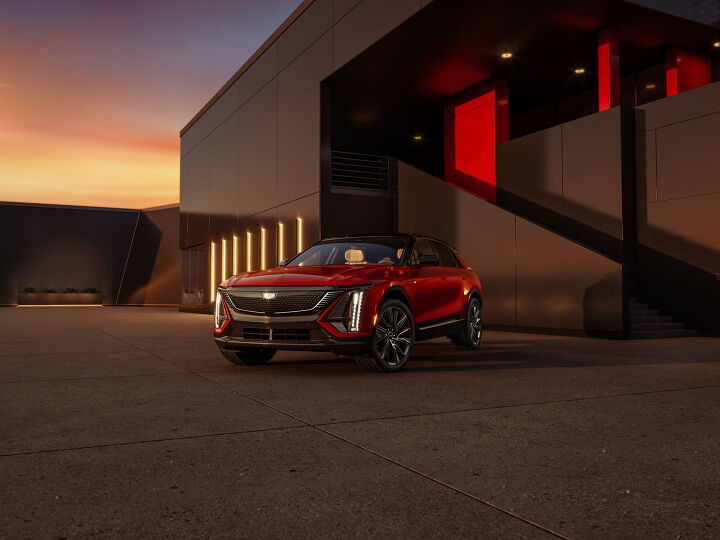
Cadillac once said it would be all-electric by 2030, but like other automakers, it has appeared to soften that commitment.
As we reported, it makes sense — Cadillac isn’t the OEM that made aggressive EV promises only to back off for a variety of reasons. While EV market share has grown, there are still hurdles for greater EV adoption. Inconsistent charging availability is one. Consumer preference for ICE vehicles or hybrid/PHEVs appears to be another.
Meanwhile, Cadillac sales have been dipping — except for the Lyriq EV, which had a rough start last year but has sold much better through the first quarter this year.
Looking at the sales declines, the problem might not be powertrains.
Perhaps Cadillac has lost some of its luster, no matter what powertrain is being used.
Or, perhaps, it’s perception?
I think it’s a little bit of both.

Cadillac does offer some strong models. The Escalade isn’t my cup of tea but it remains a strong entrant in the large luxury SUV segment — and you can even give it the V treatment. The Blackwings are a blast. The CT4 strikes me as a nice alternative to a 3-Series or a Lexus ES.
But the XT4/XT5/XT6? I don’t think they’re bad vehicles, per se, but they don’t feel special the way a Caddy should. They’re nice, sure, but we’re talking about Cadillac here. “Pretty Nice” is fine for Buick, since that’s supposed to be entry-luxury brand bridging the gap between Chevy and Caddy. But Caddy is supposed to be a level above that.

The naming conventions probably don’t help. Alphanumeric naming schemes aren’t always bad. But I doubt XT5 moves the needle much with a young, well-off buyer who thinks of Cadillac as being this luxurious brand with models that have interesting names.

I don’t want to be unfairly harsh here. Cadillac is, generally speaking, doing design well right now. Exterior styling across the board is attractive. And, again, the Blackwing models are on par with the competition. There are good things happening with the brand — but is it enough?

It would help if GM finally learned how to differentiate luxury-car interiors from cheaper GM models. I’ve beat this drum before, but customers are smart and well-informed. People know that a Lexus ES shares a lot with the Toyota Camry but they pay more for it anyway in part because the interior looks and feels much more upscale. Sure, there are other factors — luxury brands offer standard features that are either options or unavailable on the cheaper mainstream cars, and the dealer experience is generally much nicer. But in the end, it’s the product that the owner lives with for two to five years — or longer.
That was my biggest beef with the CT4, for example. The materials above the beltline looked and felt price appropriate — but the ones below the beltline felt cheap. That shouldn’t be acceptable on a Cadillac.

At least Lincoln finally learned to do a better job of not appearing to have raided the Ford parts bin. Cadillac needs to learn that lesson.
It is nice to see the Lyriq selling better — and my very brief experiences with the Lyriq suggest that Cadillac is capable of interior design that matches the brand. Let’s hope that lesson translates across the rest of the lineup.
If Cadillac can either ditch the alphanumeric scheme or at least make it make more sense to the average buyer, improve on interior design, and market its vehicles properly, the brand has a chance at a renaissance.

If it can do that, it won’t matter much how the vehicles are powered.
[Images: Cadillac, © 2023/2024 Tim Healey/TTAC.com]
Become a TTAC insider. Get the latest news, features, TTAC takes, and everything else that gets to the truth about cars first by subscribing to our newsletter.

